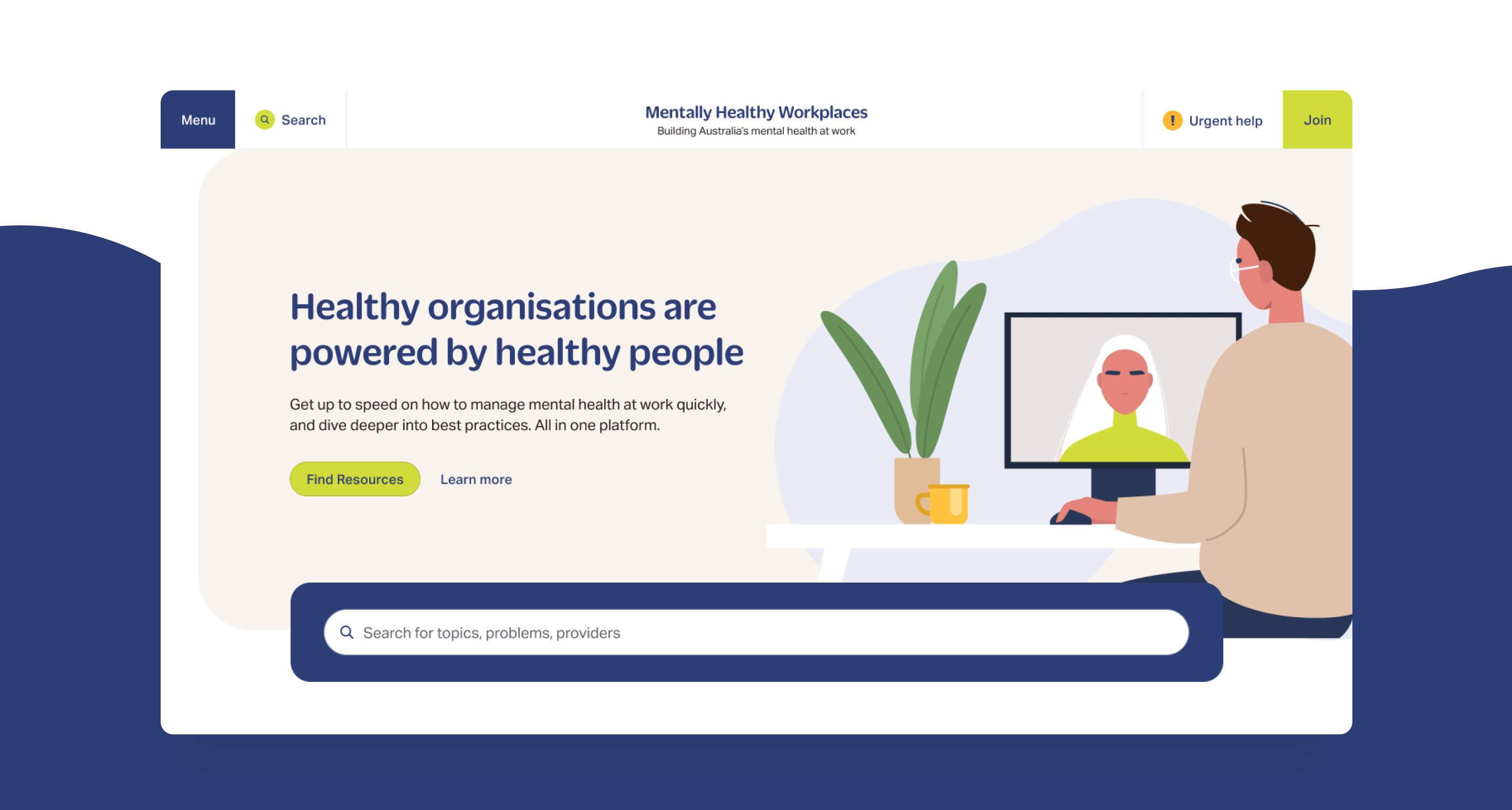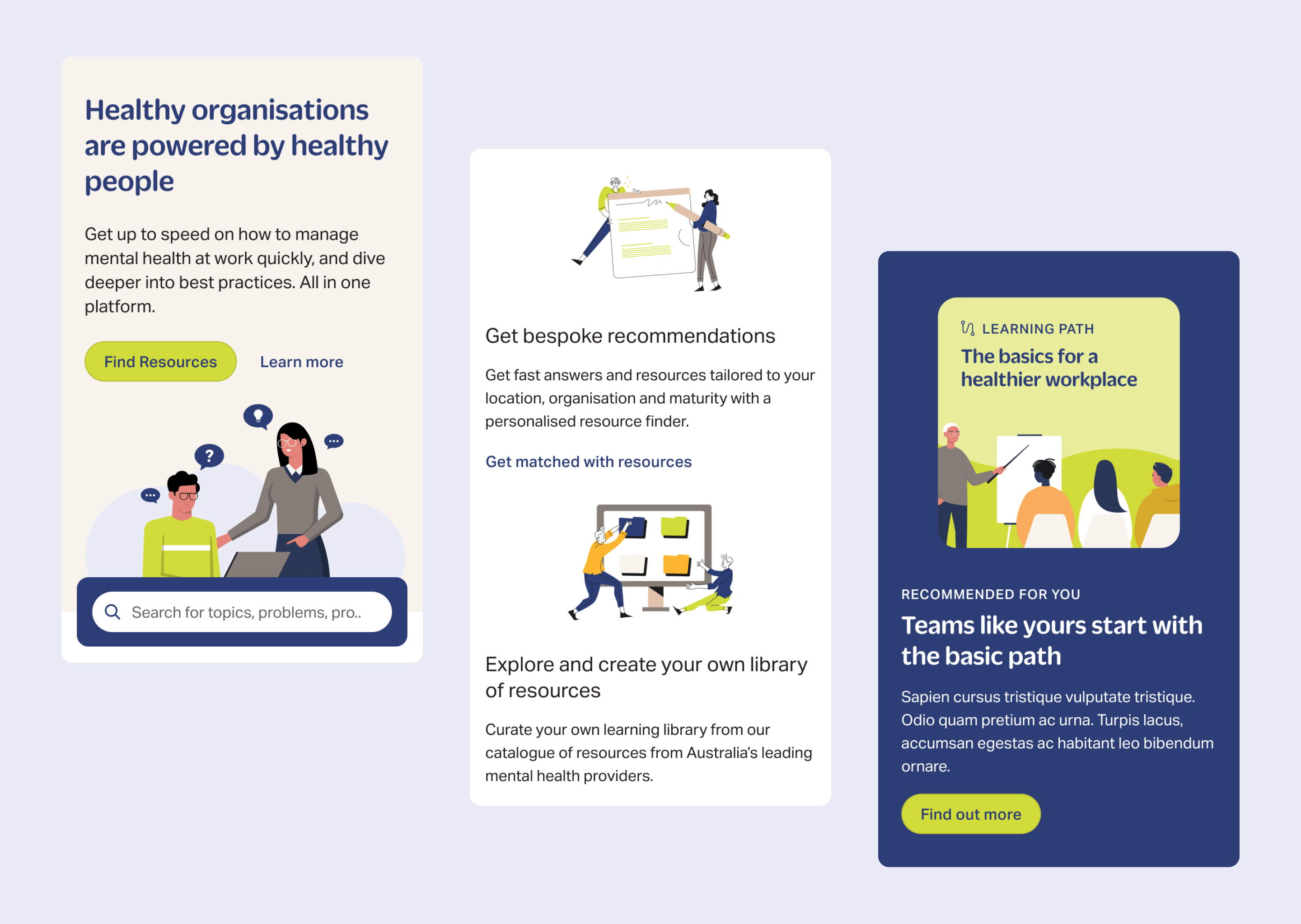Supporting mental health in Australian workplaces
National Mental Health Commission
Supporting mental health in Australian workplaces
National Mental Health Commission
In the last few years, the Australian workplace changed and businesses are aware of the cost and impact of mental health on their productivity and employees. It is in this time of change the National Mental Health Commission (NMHC) has embarked on a project to create the Mentally Healthy Workplaces platform.
Mentally Healthy Workplaces is a ‘one-stop shop’ for aggregated mental health resources and solutions for Australian workplaces. Pollen was asked to help design a simple, scalable and trusted mental health resources platform for workplaces and teams to plan, build resources to create a mentally healthy workplaces.

A trusted, all-in-one solution for mental health at work
Pollen was asked to design a simple, scalable and trusted mental health resource platform to help every workplace around Australia to plan, build and implement mental health at work initiatives.
Understanding the spectrum of needs
The initial challenge was to understand the needs of businesses, as they vary by industry, size and goals. Distilling the existing research, we were able to identify the core mindset of our users when they are searching for information around mental health for the workplace. We were able to frame their motivations based on a “reactive” and “proactive” mindset.
The spectrum of needs for users ranged from the team leader looking to support an employee’s return to work, to an HR officer who is seeking content on how to create better processes and for those managers who need to get information quickly in a crisis. During our project discovery phase, we had to identify these needs and context before we could design a solution for them.

A strategic approach to content
It was clear that structuring content around topics, industry and information type was going to be the puzzle we would need to piece together with our client, as well as our end users. Adding to this complexity was the need to provide learning modules to step proactive users through identifying, learning and implementing change; no small challenge.
Setting up the content model and information taxonomy allowed us to validate with sample content, categories and resources so that we were able to ensure we were on the right track. Language also featured in the feedback and formed the foundation for content writers at the NMHC.
In addition, other way-finding methodologies were designed and tested to allow our users to continue reading or to create topic boards to share with their organisation.
I’d like to see this language be more action orientated… We don’t want “guava infused turmeric latte.
User testing participant

User led decision-making & design
Rapid prototyping provided us a way to validate assumptions on how managers could find, save and share information on the platform. We knew we had to create a design that was ‘inviting’ and not too “government looking” where users felt that they had come to the right place, regardless of their background or needs. The platform needed to provide clarity and simplicity. It needed to also be educational and abundant, trusted, as well as a flexible digital resource for users to come back to over time.

Interviews with a cohort of HR teams and advocacy groups across different industries and business sizes revealed how confusing and time-consuming it was for them to find support across a range of different websites. Their response helped inform the gaps we had to solve for. Validation with this group throughout the sprints gave us confidence we had solved them.
